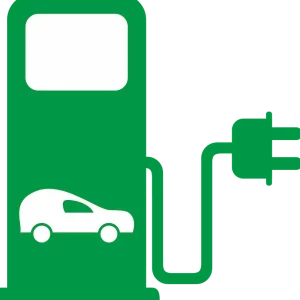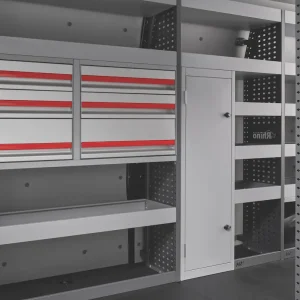A farmer friend shrugged with indifference when the new Toyota Hilux arrived in his yard for a quick show and tell. Launched late last year with a bigger 2.8-litre engine and a lot more power, he knew all about it and we thought he would be at least interested – if not impressed – by this new version of the godfather of all pick-up trucks.
But that kudos, the air of invincibility, which gives rise to monikers such as ‘indestructible’, ‘bulletproof’ and indeed ‘invincible’ (as the trim level suggests) is part of the Hilux’s wider problem. Is the Toyota Hilux actually too good?
The measurement of greatness is relative; was Alexander the Great better than Genghis Khan? If your measuring stick is territory seized then no, but what about the legacy left behind? One built the foundations for a great civilisation, while the other is regarded as one of the greatest scourges in history. Greatness is relative, and of course opinions about the Hilux are subjective, but it has sold 18 million trucks and arguably conquered more countries than both men in the process, having taken its occupants everywhere from dusty deserts to frozen poles. Of late, however, it has become something of a relic in the pick-up market. Its single turbo 2.4-litre engine produced just 148hp in a world where 200hp is becoming the norm. It’s also been left behind in equipment, and some would say that its rivals have become as good as, if not better, off-road as well.
If the Hilux is to get anywhere close to regaining its territory it needs to improve across the board, starting with the engine. Thankfully the new 2.8-litre has plenty to call upon, 201hp to be precise, and 420Nm of torque too.
While this doesn’t make it the most powerful pick-up on sale, it puts it pretty close to the top of the pecking order behind the 2.0-litre, twin-turbocharged 210hp of the top-rated Ford Ranger, which is the most powerful now that the V6 versions of the Amarok and X-Class are no longer available. It is, however, a huge improvement on the outgoing 2.4-litre engine, not only in terms of its performance but also in its character, which is quieter and a lot less harsh sounding throughout the rev range.
While on start up it does sound just as agricultural as before, it mellows as the revs climb with noticeably fewer vibrations. Idling is perhaps its least favourite pastime, and it is now far more at home at a steady 60mph (registering just 1,500rpm) than any previous iteration of the Hilux.
The 2.4 is still available, but unless you’re on a real budget the larger engine is a no-brainer – not least because it produces little in the way of a fuel penalty. While 31.3mpg isn’t a great selling point for a pick-up these days, it is only 1.0mpg less than the 2.4-litre claims to return.
If cutting costs is a priority, we would consider opting for the six-speed manual we tested here rather than the six-speed automatic as it provides a reassuring connection to the vehicle that many buyers are likely to appreciate.
It has a relatively long throw on the gear lever, making changes seem a little like waving your arm around unnecessarily by your knee, but it’s clearly been well adjusted to cope with the uplift in power and torque being thrown at it. During some exuberant off-road testing it shrugged off the high levels of torque with barely a hint of shunt through the driveline, while on road it combines well with the broad torque range from 1,400rpm to 3,400rpm to make smooth, sophisticated changes – for a pick-up truck, at least.
It’s certainly a positive step forward and so too is the handling, with Toyota promising ride quality thanks to retuned leaf springs and improved steering. The latter is definitely true; the Hilux feels more purposeful on the road and fares better at low speeds. Small corrections to steering while tackling obstacles in low range are immediately transferred to the wheels and it feels more capable as a result. The improved suspension is less noticeable as the Hilux was already a very well-mannered truck. Changing the shock absorbers, adjustments to the leaf springs and new bushes has firmed up the ride a touch, which is most obvious on a bad road surface. But, for the most part, it’s not something you’d notice if you were not told about it, though it is an improvement nonetheless.
Finally, there’s the interior. The Invincible specification tested is the first of the two trim levels to get the 2.8-litre engine option but is by no means a budget offering in the range, standing above the Active and Icon trims, which are now exclusively for the 2.4-litre model.
Updates inside include an 8in touchscreen with Apple CarPlay and Android Auto (that is actually applied to Icon trim upwards) as well as front and rear parking sensors on both Invincible models. Much like our ‘scorched orange’ test colour the interior still remains something of a like it or loathe it affair, but in the Hilux’s favour the touchscreen continues to get more seamlessly integrated into the centre console, rather than an aftermarket addition that many of the multimedia units of old have felt like.
But it still begs the question, who will buy it? The answer is surely everyone. Yet, while our farmer friend is unconvinced, happy to let his own Hilux die a long working death, these changes to the model are more important than ever in a sector where the Ford Ranger has increasingly been running away with sales.
Toyota Hilux Invincible 2.8 manual
Price (ex VAT) £29,553
Price range (ex VAT) £22,466-£32,533
Insurance group 45D
Warranty 5 years,100,000 miles
Service intervals 10,000 miles
Gross payload 1,015kg
Engine size/power 2,755cc/200hp
MPG 31.3mpg (WLTP)
CO2 236g/km





